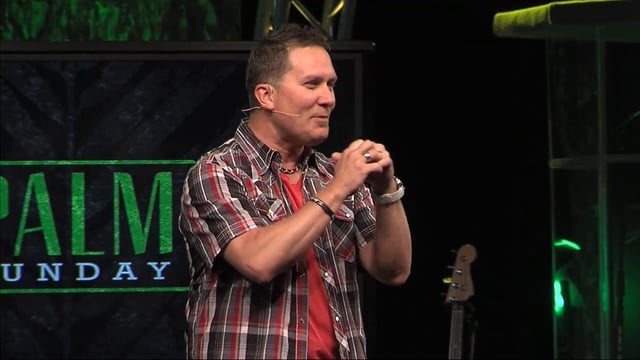Sermon Title: “The Value of One”
Preacher: Dr. Benji Kelley, Senior Pastor at Newhope Wesleyan Church in Durham, NC.
[vimeo id=”123557530″]
Review: At Wesleyansermons.com, we feature preachers whose sermons demonstrate perspectives and techniques worth replicating. Dr. Benji Kelley, Senior Founding Pastor at Newhope Wesleyan Church in Durham, NC, is one such pastor. Below, we’ll examine what we believe are some of Benji Kelley’s core perspectives, at least from the perspective of the listener.[1]
For Kelley:
- Sermons Teach People to Read: “Would you go after the one and leave the ninety-nine? The shepherds say, ‘Absolutely!’ but we say ‘No way!’” The best sermons teach congregants how to read and interpret Scripture. In helping the congregation see the gap between the original context and our context, Benji points listeners to the bridge between Scripture and application, leading them across it masterfully. Because of Benji’s sermons, Newhope congregants learn how to navigate this bridge, too. It would be difficult to overemphasize the need for pastors to model the pathway from scripture through interpretation to life application. Congregations need this more than we think, more often than we realize, and soak up more than they consciously remember.
- Phrases Are Sticky: “When we become like Jesus, we are willing to go after the one.” Words matter. If we want sermons to stick to lives, we need phrases that stick to minds. Benji’s statements are beautifully memorable; thanks to his thoughtful preparation, we walk away with faithful exegesis wrapped in memorable, applicable principles. So many preachers I coach (Dave) have all the basic content they need once they are done with their typical exegesis. They have dug up enough “bones” from the layers of biblical history and biblical interpretation. The bones simply do not have flesh on them. They are not alive. They need to be inbreathed with the artistry of God-inspired wordsmithing. I like to think of the best preachers as Bezalel-like figures. Remember Bezalel? He was the anointed and ordained artisan for the ark of the covenant. The materials were there for anyone, as was the basic design and structure. But only someone who was willing to sweat for form and beauty was allowed to bring it to action. Preachers need to sweat over creativity in order to bring form and beauty to the content they have found. Sticky phrases are one way pastor Benji accomplishes this. Another way is sticky questions. Listen to Benjis sermon and notice how many times a carefully turned, directly phrased question draws the listener to think and reflect. Tweetable quotes and repeatable questions are powerful preaching tools that give the message shelf-life even after the sermon is forgotten.
- Transitions Flow Smoothly: “People see something of great value and do what it takes to go and get it… and that’s exactly what I want to talk to you about today.” Kelley’s transitions gain attention rather than losing it. Benji seamlessly moves from Good Friday to the Gospel, and the congregation doesn’t feel mental whiplash. Because the illustration relates to our experiences and pastor Benji relates to us personally, we’re more likely to respond attentively to the Gospel. Check out the illustration in pastor Benji’s sermon. Pay close attention to how the illustration gets you from point a to point b. Most preachers listen to sermons as if they were in the congregation. That’s fine and it helps us hear the Word of God for us. But we need to shift to hearing sermons the way painters view paintings. They not only stand back and admire the whole, they get up close and study the brush strokes. Study the how of the illustration-as-transition and your preaching will benefit.
- Delivery Matches Message:When Benji says, “You are not going to want to miss next week!” we know that Benji doesn’t want to miss next week. He’s excited! Some preachers pound the pulpit with an angry fist while shouting “God loves you!” The mixed messages are confusing. Others say the same words “You are not going to want to miss next week” with a flat face and flatter voice. Pastor Benji’s posture, pitch, and tone reflect excitement, energy, and engagement. When Benji hits key sermon points, his demeanor reflects his words: he slows down for serious points, crescendos into high-energy points, and radiates joy in delivering the Good News. Consequently, we feel emotional resonance with Kelley’s words.
Application Points:
- Preach to Teach:As we prepare our next sermons, let’s consider how the sermon teaches congregants to read Scripture for themselves. Do our sermons give congregants insight into the process of exegesis and application, or do our sermons give “pre-packaged” exegesis and meaning? Let’s teach others to read through our sermons.
- Iron the Seams: Think of the last sermon you preached: did your transitions build interest or lose it? As we prepare our next sermons, let’s brainstorm ways to smoothly move from one point to the next: garnering people’s attention, rather than having them slip through the divide.
- Make the Ask: Great sermons don’t just make good statements; they ask the right questions. As we go through the sermon preparation process (and every pastoral meeting we have) let’s make a goal: ask more, talk less.
Sermon review by David Ward and Ethan Linder
[1] For a brief introduction into the “turn to the listener” in the field of homiletics, aka the art and science of preaching, see “Listening to the Listener” by Ron Allen and Mary Alice Mulligan at http://www.homiletic.net/index.php/homiletic/article/viewFile/3376/1597
